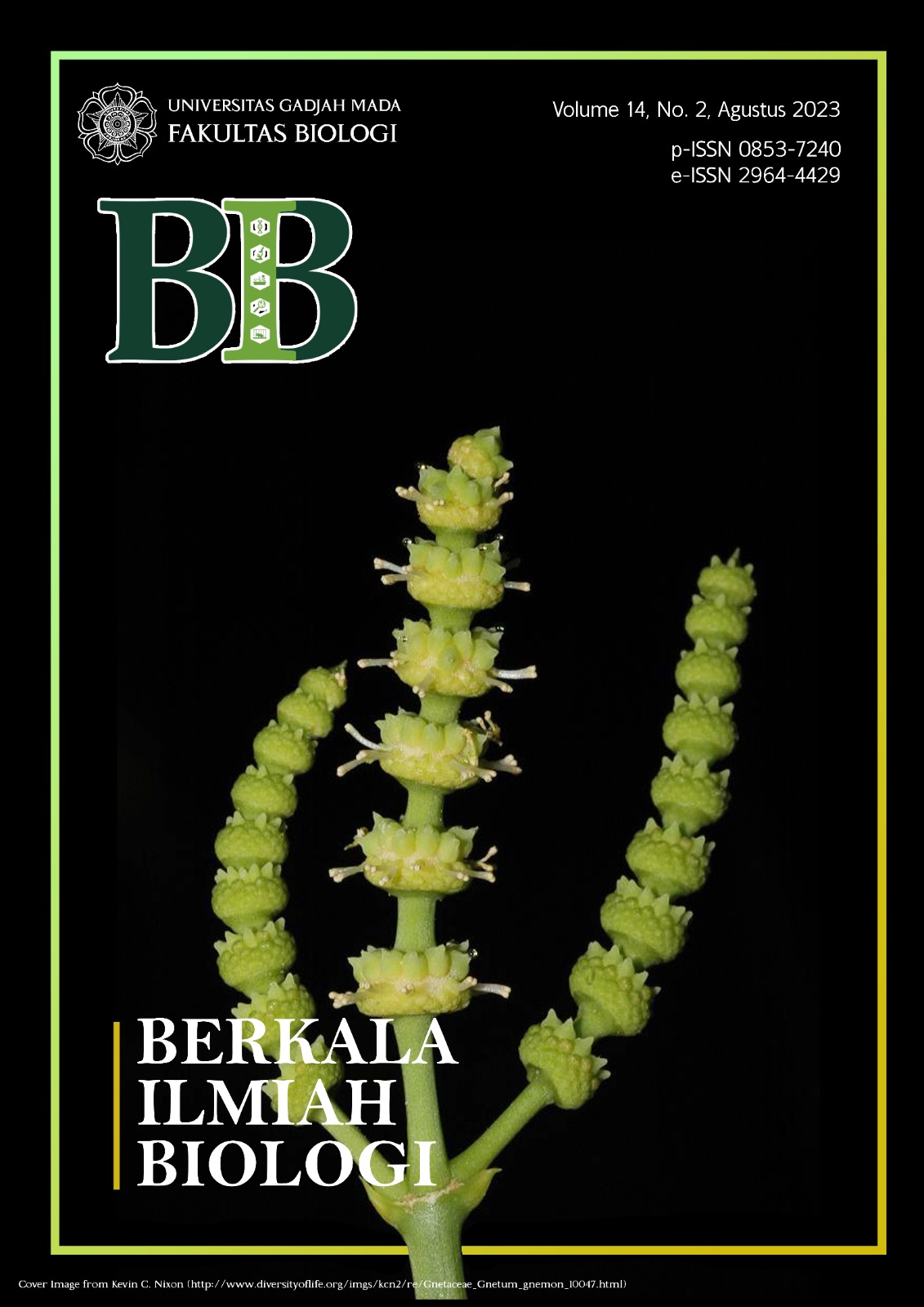Comparison of the Composition and Abundance of Phytoplankton Based on Different Land Use in the Cisadane River, Tangerang Regency
Main Article Content
Abstract
Phytoplankton is an autotrophic organism that produce its own food through the process of photosynthesis with the help of sunlight which forms the basis of water productivity to be utilized for trophic organisms above. In freshwater, river plankton are categorized as potamoplankton. Rivers are a dominant freshwater ecosystem and have a more stable morphology than other freshwaters. Changes in land function is triggered by an increase in human population, an increase in the number of residential areas and industrial activities that discharge untreated waste into the river. Because of the importance of phytoplankton for life, it is necessary to conduct research on the Comparison of Phytoplankton Composition and Abundance Based on Different Land Uses in the Cisadane River, Tangerang Regency. In this study, sampling was carried out using a purposive sampling method by measuring parameters such as pH, temperature, and water transparency. Identification of phytoplankton composition and abundance was carried out using the Sedgwick Rafter Counting Cell (SRCC) using the sweep method. The results of this study obtained 23 phytoplankton genera from 6 classes consisting of: Bacillaryophyceae, Cyanophyceae, Chlorophyceae, Conjugatophyceae, Trebouxiophyceae, and Zygnematophyceae. Phytoplankton abundance was 185-490 Ind/L with the highest abundance in both areas are Bacillaryopiceae and Navicula. The diversity index was 1.307-2.124 and the dominance index was 0.201-0.461. Water quality parameters that affect the composition and abundance of phytoplankton are water-transparency, pH, and water temperature. The fertility level of the Cisadane River waters has an oligotrophic fertility level.
Article Details

This work is licensed under a Creative Commons Attribution 4.0 International License.


